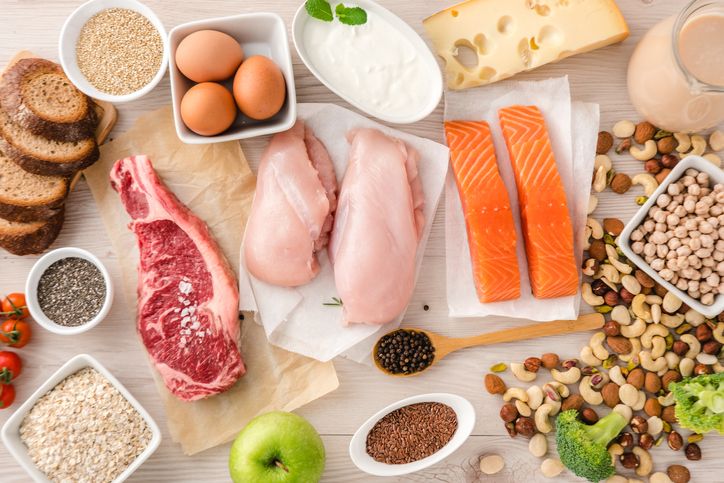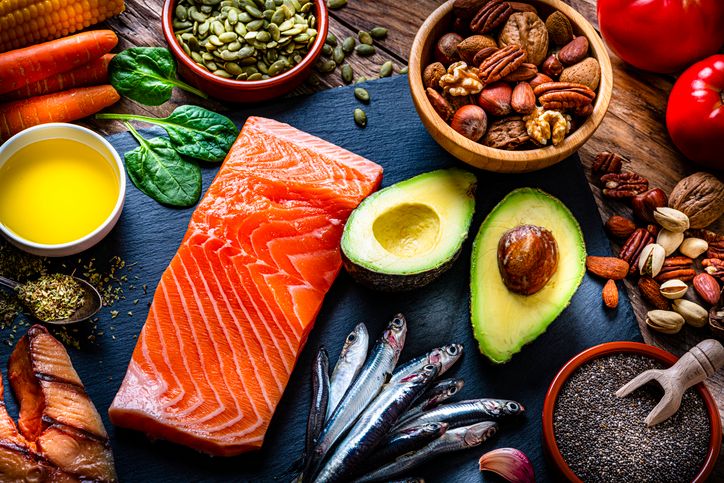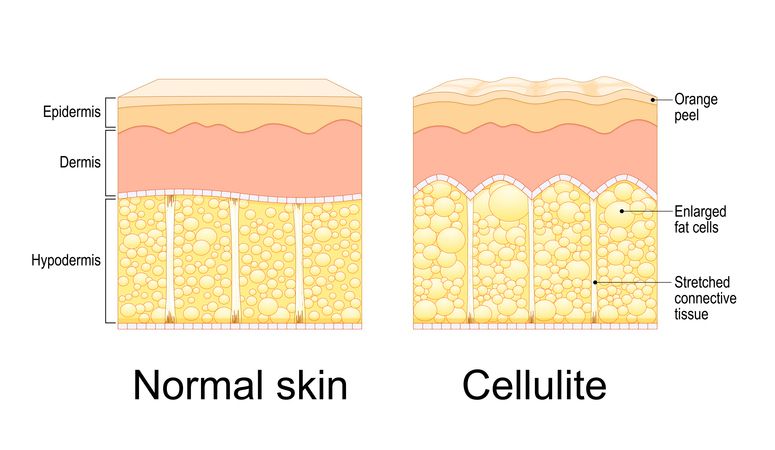
Author: Natalie Ng|Updated: 8 May 2025
Eating the right dinner helps with weight loss. It gives your body the fuel it needs without adding too many calories. A good meal at night should be light, filling, and packed with nutrients. It should also taste good. To lose weight in a healthy way, your dinner needs to include lean protein, fiber, healthy fats, and vegetables. These help control hunger and support your body’s needs. Meals that are low in calories but high in nutrition make it easier to stick to your goals. You don’t need to skip food. You just need to choose the right food. This article shares simple, healthy dinners for weight loss. They use ingredients like chicken, sweet potato, black beans, white beans, and spinach. Many of these meals are easy to cook. Some use a slow cooker. Others are ready in under 30 minutes—perfect for busy weeknights.

Why Dinner Matters in a Healthy Weight Loss Journey

Your body needs less energy at night. If you eat too much dinner, your body stores the extra calories as fat. This slows down your weight loss. A large, heavy dinner can also make it harder to sleep and digest food properly.
A lighter dinner helps your body stay in balance. It gives you enough fuel without overloading your system. Light meals with the right ingredients support healthy weight loss. You feel full but not stuffed. You sleep better and wake up without bloating.
Many people make the same mistakes at dinner. They eat meals high in sugar, fat, or refined carbs. These foods do not fill you up. You get hungry again soon after eating. Some dinners also lack enough protein, which is important for feeling full and keeping your muscles strong.
If you want to lose weight, your dinner should be simple, balanced, and low in empty calories. In the next part, you’ll learn what to put on your plate to make that happen.
What a Weight-Loss-Friendly Dinner Should Include
A balanced dinner helps you lose weight without feeling hungry. Each meal should include a mix of protein, healthy fats, complex carbohydrates, and vegetables. These ingredients work together to give your body what it needs while keeping calories low.
Protein
Protein keeps you full and supports muscle health. It also takes longer to digest, which helps control hunger after dinner.
Best protein options:
• chicken (grilled, baked, or cooked in a slow cooker)
• flaky salmon (pan-seared or baked)
• pork (lean cuts like tenderloin)
• beans (like black beans or white beans)
• lentils and chickpeas (plant-based and packed with nutrients)
Healthy Fats
Healthy fats help your body absorb vitamins and add flavor to meals. They also slow digestion and help you stay full longer.
Best healthy fats:
• avocados (sliced or mashed into a dressing)
• olive oil (for cooking or drizzling on salads)
• nuts and seeds (used in sauces or sprinkled over cooked vegetables)
• yogurt (plain, used as a topping or dip)
Avoid deep-frying. Use fats in small amounts. A little goes a long way.
Complex Carbohydrates
Complex carbs give you energy and fiber. They keep your blood sugar steady and help prevent cravings later at night.
Best complex carbs:
• sweet potatoes (roasted, mashed, or baked)
• brown rice or wild rice
• quinoa
• whole grain pasta or gluten free pasta
• black beans, white beans, chickpeas, and lentils
Use small portions. Balance carbs with enough protein and vegetables to keep the meal light but filling.
Vegetables
Vegetables are low in calories and high in fiber. They make meals bigger without adding extra fat or sugar. Use them as the base of your dinner.
Best vegetables for dinner:
• spinach, kale, or other leafy greens
• broccoli (steamed or roasted)
• cherry tomatoes
• zucchini, peppers, or cauliflower
• garlic, onion, and herbs for flavor
Fill half your plate with vegetables. They add color, texture, and nutrients without extra calories.
Each part of the meal has a job. Together, they help you feel full and energized while keeping your dinner light, nutritious, and low in calories.
10 Healthy Dinner Recipes to Try
These dinners use simple ingredients. They are easy to prepare, low in calories, and high in nutrition. Each recipe helps you stay full without overeating. You’ll find meals with protein, fiber, and healthy fats. Most are ready in under 30 minutes or can be made in a slow cooker.
1. Garlic Lemon Chicken with Spinach and Sweet Potato
Cook chicken with garlic and lemon zest. Roast sweet potato until soft. Sauté spinach in olive oil. Serve everything together for a balanced and filling meal.
2. Flaky Salmon with Lemon Zest and Broccoli
Bake salmon with lemon zest and garlic. Steam broccoli on the side. This dinner is rich in protein, healthy fats, and fiber.
3. Stuffed Peppers with Ground Chicken and Black Beans
Fill bell peppers with cooked ground chicken, black beans, and rice. Bake until tender. This recipe is gluten free and full of flavor.
4. Chickpea and Lentil Veggie Stew with Tomatoes
Simmer chickpeas, lentils, and chopped tomatoes with garlic, onions, and spices. This plant-based dish is packed with fiber and protein.
5. Slow Cooker Chicken and White Bean Soup
Add chicken, white beans, vegetables, garlic, and broth to a slow cooker. Cook on low until tender. This soup is light, warm, and easy to digest.
6. Vegetable Stir-Fry with Brown Rice and Crispy Tofu
Stir-fry tofu until crispy. Add chopped vegetables like broccoli, bell peppers, and spinach. Serve with cooked brown rice for a complete meal.
7. Zucchini Noodles with Cherry Tomatoes and Pesto
Spiralize zucchini into noodles. Toss with cherry tomatoes and a spoonful of pesto. This is a light, low-calorie dinner that’s quick to make.
8. Grilled Pork with Sweet Potato Mash and Greens
Grill lean pork slices. Mash roasted sweet potato with a bit of olive oil. Add sautéed greens like spinach or kale. This meal is balanced and satisfying.
9. Baked Salmon with Spinach and Yogurt Dressing
Bake salmon with garlic and olive oil. Serve over steamed spinach. Top with a spoon of plain yogurt mixed with lemon zest for added flavor.
10. One-Pot Pasta with Broccoli, Chicken, and Garlic
Cook chicken pieces, broccoli, garlic, and whole grain pasta in one pot. Add broth to cook everything together. This recipe is filling and easy to clean up.
These meals use basic cooking methods like baking, roasting, stir-frying, and slow cooking. Each one includes a good mix of protein, vegetables, and healthy carbs. They are made with real food, easy to repeat each week, and help support healthy weight loss.
Tips for Preparing Light, Filling, and Satisfying Dinners
Preparing dinners that support weight loss involves choosing ingredients and cooking methods that are both nutritious and satisfying. Here are practical tips to help you create meals that are light, filling, and enjoyable:
Use Simple Cooking Methods
Opt for cooking techniques that preserve the natural flavors and nutrients of your ingredients:
• Grilling: Enhances flavor without adding extra fat.
• Baking: Allows for even cooking with minimal oil.
• Steaming: Retains nutrients in vegetables.
• Sautéing: Use a small amount of olive oil for flavor and healthy fats.
These methods help keep meals low in calories and rich in taste.
Incorporate Flavorful Ingredients
Enhance the taste of your meals without adding unnecessary calories:
• Garlic: Adds depth to dishes.
• Lemon zest: Provides a fresh, tangy flavor.
• Herbs and spices: Use rosemary, thyme, cumin, or paprika to season your food.
These additions can make your meals more enjoyable and satisfying.
Focus on Balanced Portions
Ensure your meals are balanced to keep you full and energized:
• Protein: Include sources like chicken, salmon, or beans to support muscle health.
• Vegetables: Fill half your plate with a variety of colorful vegetables for fiber and nutrients.
• Whole grains: Add a small portion of brown rice, quinoa, or whole grain pasta for complex carbohydrates.
Balancing these components helps control hunger and supports healthy weight loss.
Plan Ahead for Busy Weeknights
Preparing meals in advance can help you stay on track:
• Meal prep: Cook larger portions and store leftovers for quick dinners.
• Slow cooker recipes: Prepare ingredients in the morning for a ready-to-eat meal in the evening.
• Simple recipes: Choose dishes that require minimal ingredients and steps.
Planning ahead reduces the temptation to opt for less healthy options when time is limited.
By implementing these tips, you can create dinners that are both satisfying and conducive to weight loss.

How to Plan Ahead for Busy Weeknights

Planning dinners in advance helps you stay on track with your weight loss goals, even on busy weeknights. By preparing meals ahead of time, you can avoid unhealthy choices and ensure you have nutritious options ready to eat.
Meal Prep Strategies
• Batch Cooking: Cook larger portions of meals like soups, stews, or casseroles, and store them in the refrigerator or freezer for later use.
• Pre-Chopped Ingredients: Wash and chop vegetables in advance to save time during meal preparation.
• Portion Control: Divide meals into individual portions to help manage calorie intake and make reheating easier.
Quick and Healthy Meal Ideas
• Grilled Chicken with Steamed Vegetables: A simple and balanced meal that provides protein and fiber.
• Stir-Fried Tofu with Broccoli and Brown Rice: A plant-based option that's rich in nutrients and satisfying.
• Salmon Salad with Mixed Greens and Lemon Dressing: A light yet filling meal that's quick to assemble.
By implementing these strategies and meal ideas, you can maintain a healthy eating routine even during your busiest days
Book Now to Experience
S6 Body Sculpting Treatment
1 Minute Self-Registration
Date should not be before minimal date

Incorporating Dinners into a Holistic Weight Loss Plan
A holistic approach to weight loss considers more than just the food on your plate. It integrates your eating habits with your overall lifestyle to support sustainable health. Here's how to align your dinners with a holistic weight loss strategy.
Mindful Eating Practices
• Eat without distractions: Focus on your meal without screens or multitasking to better recognize hunger and fullness cues.
• Chew thoroughly: Taking time to chew can aid digestion and increase satisfaction.
• Listen to your body: Stop eating when you feel comfortably full, not when the plate is empty.
Balanced Meal Composition
• Include a variety of nutrients: Combine lean proteins, healthy fats, and complex carbohydrates to create a satisfying and nutritious meal.
• Portion control: Be mindful of serving sizes to avoid overeating, even with healthy foods.
• Vegetable focus: Fill half your plate with non-starchy vegetables to increase fiber intake and promote fullness.
Consistent Meal Timing
• Regular schedule: Eating dinner at the same time each evening can regulate your body's hunger signals.
• Avoid late-night meals: Finish eating at least two to three hours before bedtime to support digestion and sleep quality.
Lifestyle Integration
• Physical activity: Incorporate regular exercise into your routine to complement your dietary efforts.
• Stress management: Practice relaxation techniques to reduce stress-related eating.
• Adequate sleep: Aim for 7-9 hours of quality sleep per night to support metabolism and appetite regulation.

Pair Healthy Dinners with S6 Body Sculpting Treatment for Faster Fat Loss
Eating healthy dinners for weight loss helps reduce calories and boost nutrition. But some fat areas are harder to lose, even with a balanced diet. This is where S6 Body Sculpting Treatment can help. It works with your food and fitness habits to make fat loss more visible, especially in areas like the belly, thighs, arms, and waist.
What Is S6 Body Sculpting Treatment?
S6 Body Sculpting Treatment is a non-invasive therapy that uses low-energy bio-laser technology to reduce fat layers. It helps people who want to shape their body without surgery, injections, or long recovery. The treatment focuses on seven common trouble spots: belly, waist, back, thighs, buttocks, calves, and arms.
How It Works
The process begins with a consultation and body analysis. A trained therapist confirms your goals and selects the target area. During treatment, a bio-laser penetrates deep into the fat layers. The fat cells release fatty acids, which the body removes through natural drainage.
A vacuum suction tool is used to massage the skin. This boosts your body’s metabolic rate and helps move the broken-down fat out faster. The bio-laser also supports collagen production, which helps firm and tighten the skin at the same time.
How It Supports Healthy Weight Loss
S6 Body Sculpting Treatment supports your weight loss plan by helping you target stubborn fat that doesn’t respond to meals or exercise alone. When combined with low-calorie, protein-rich meals—like baked salmon, chicken and broccoli, or chickpea salads—the treatment speeds up visible results. You can follow your healthy dinner routine and let the S6 treatment handle the areas that are harder to shape.
Benefits of S6 Body Sculpting Treatment
• targets specific fat areas like the belly, thighs, and waist
• uses non-invasive technology that requires no downtime
• helps release fat and improve lymphatic drainage
• boosts metabolism in the treated area
• firms and tightens skin through collagen stimulation
• safe and suitable for various body types
You don’t need to change your entire routine. By adding this treatment to your existing habits—like cooking light meals, eating low-calorie dishes, and prepping healthy recipes—you give your body an extra boost in fat reduction and contouring.
If you’ve already changed how you eat and still see stubborn areas, this treatment can help make your progress more noticeable.
Book your S6 Body Sculpting Treatment now and make your healthy weight loss routine even more effective.Book Now to Experience
S6 Body Sculpting Treatment
1 Minute Self-Registration
Date should not be before minimal date
FAQ
1. Can I eat pasta for dinner if I'm trying to lose weight?
Yes, you can include pasta in your dinner while aiming for weight loss. Opt for whole grain or legume-based pasta, which are higher in fiber and protein compared to traditional pasta. Pairing pasta with lean proteins like grilled chicken or salmon and plenty of vegetables can create a balanced, satisfying meal that's low in calories and supports your weight loss goals.
2. How can I make healthy dinners more filling without adding too many calories?
To make your healthy dinners more filling, focus on incorporating high-fiber vegetables, lean proteins, and healthy fats. Foods like sweet potatoes, beans, spinach, and chickpeas add volume and nutrients without excessive calories. Including a source of healthy fat, such as avocado or olive oil, can also enhance satiety and flavor.
3. Is it okay to have a light dinner if I had a heavy lunch?
Yes, having a lighter dinner after a heavier lunch can help balance your daily calorie intake. Choose meals that are low in calories but rich in nutrients, such as a salad with lean protein or a vegetable-based soup. This approach supports healthy weight loss by preventing overconsumption of calories throughout the day.
4. Are there gluten-free options for healthy dinners that aid in weight loss?
Absolutely. Many healthy dinner recipes are naturally gluten-free and support weight loss. Options include grilled meats with roasted vegetables, quinoa salads, and dishes featuring legumes like black beans or lentils. These meals are not only gluten-free but also packed with nutrients that promote satiety and weight management.
5. How does the S6 Body Sculpting Treatment complement my healthy dinner routine?
The S6 Body Sculpting Treatment enhances your weight loss efforts by targeting stubborn fat areas that may not respond to diet alone. While your healthy dinners for weight loss provide the necessary nutrients and help reduce overall calorie intake, the S6 treatment focuses on contouring specific body parts like the belly, thighs, and arms. This combination can lead to more noticeable and satisfying results in your weight loss journey.
Recommended Articles
COPYRIGHT© NEW BEAUTY MANAGEMENT LIMITED 2025. ALL RIGHT RESERVED.




